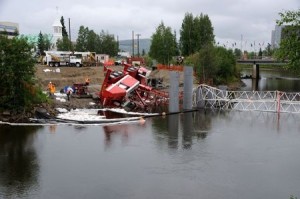 Astro Crane of New England rents hydraulic cranes, which lift between 6 and 600 tons. As you can imagine, these cranes handle very heavy things– the kind you have to be careful about or risk someone being injured or even killed.
Astro Crane of New England rents hydraulic cranes, which lift between 6 and 600 tons. As you can imagine, these cranes handle very heavy things– the kind you have to be careful about or risk someone being injured or even killed.
To reduce the potential for crane-related accidents it’s important for those involved with using the crane to fully know and understand how to properly operate the crane. Before anyone gets behind the controls of a certain crane, they should have had classroom learning and practical, real-life experience with a mentor so they can feel fully confident in their job.
Safety comes from the top– a leader sets the tone for the whole crew. Ideally, the site manager, lift planner, rigger, signal person, onsite workers and crane operators should all be on the same safety page, committed to quality communication so everyone on-site knows what’s going on with the others at all times. This means answering radio calls, keeping eyes open to see what’s happening in front of you, to the side and above or below, as well as incorporating common safety practices into the work process so no one gets hurt.
Crane accidents happen when objects the crane is moving come into contact with power lines. Other accidents occur due to overturns, falls and mechanical failures. People working near cranes are more likely to be involved in an accident than the crane operator– so ironworkers, riggers, carpenters and others working around a crane in action need to be ever-vigilant about where the crane is and what it’s doing as much as possible.
A combination of quality communication between people and watchful eyes help reduce the likelihood of crane accidents.

